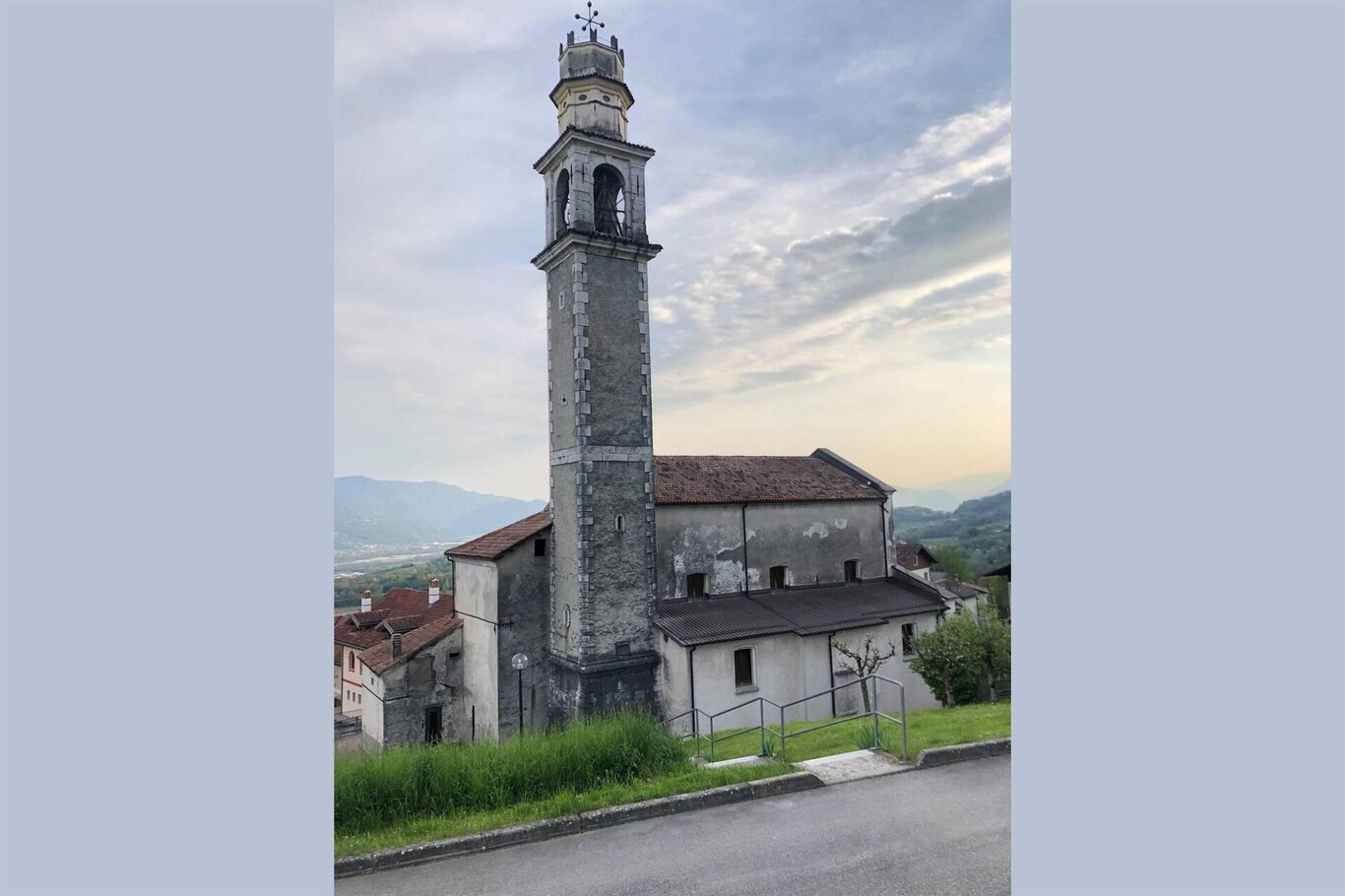The primitive parish church of San Gregorio was built between the 8th and 9th centuries, although the first mention certifying its existence is the bull of Pope Lucius III from 1185.
In 1479, the church was rebuilt, and it underwent renovation in 1670.
The structure was again altered in 1912, when the two side aisles were constructed based on designs by Alberto Alpago Novello, assisted by Enrico De Conz.
Outside, the church is preceded by the monument to the fallen, next to which are two cannons from World War I.
The facade of the church, which faces west, is composed of three sections: the central one is tripartite with four pilasters, characterized by the main portal bordered by a frame, and topped by a triangular tympanum, while the two side wings have two secondary entrances and conclude with two angular pilasters.
The interior of the building consists of three naves; at the end of the nave is the presbytery, which is in turn closed by the square apse.
The most valuable work is the altarpiece depicting the Madonna with Child flanked by Saints Gregory and Valentine, created in 1519 by Moretto da Brescia, but previously attributed to Lorenzo Luzzo.
Near the Parish, there is also a square-plan bell tower distinguished by a window surmounted by an arch.
